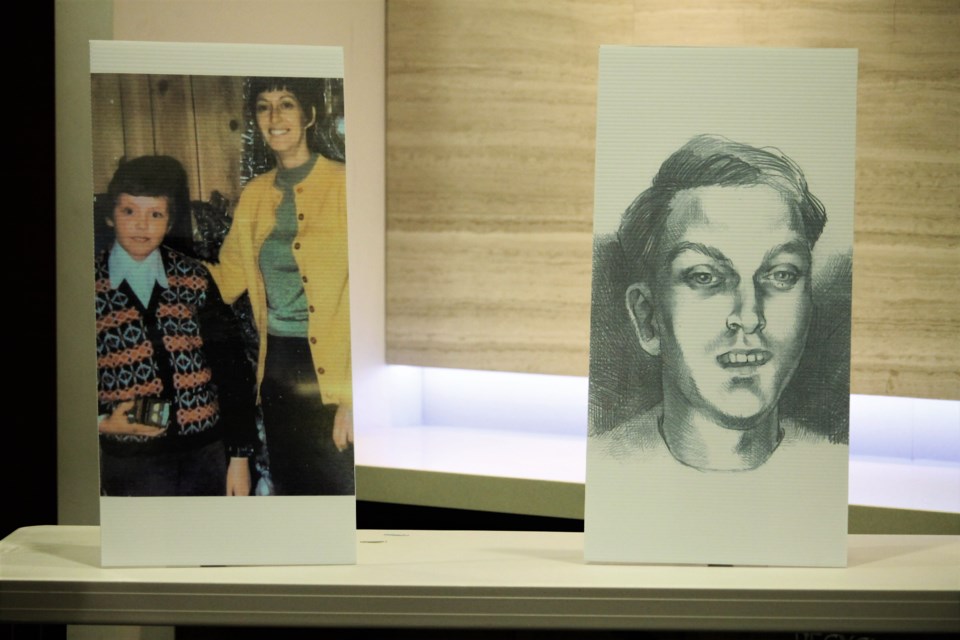REGINA — It took more than 25 years for investigators to provide closure for the family of the man involved in a 1995 railway accident in Regina, known only as John Doe, but an announcement made Thursday shared that they have finally made a positive identification in the case.
The Saskatchewan Coroners Service released today that the identity of the man stuck by a CP Rail train west of Regina on July 28, 1995 is Michael Kirov, originally of Winnipeg.
Twenty-six years after the tragedy, it was DNA research using public genealogical databases that helped identify Kirov, thanks to a collaboration with the U.S.-based biometrics company Othram Inc.
"The Coroners Service in conjunction with the Regina Police Service exhausted all avenues to find the identity of this unknown man," said Chief Coroner Clive Weighill. "With persistent investigation and new technologies, we can now provide closure for his family."
In 2019, investigators had sent a DNA sample to an RCMP lab in Ottawa to create a better DNA profile for analysis. Othram was then able to do an advanced type of analysis and compare that profile sample to those shared publicly on genealogical databases.
During this process, investigators were able to identify three first cousins, who were present at the Thursday announcement.
One of those cousins, Karen Clawson, spoke on behalf of her family, who knew Kirov as Michael Lewis, his birth name. She said he was an only child and as such, was very close with his three cousins.
“Michael was such a shy, cute little guy,” said Clawson. “He was very inquisitive, really, really smart [and] he was a very interesting person.”
Clawson said he had left Winnipeg in 1991, after the passing of his mother to whom he was very close. Family thought he was headed west for Vancouver, and she said they had no idea that he had died.
They learned that news from cold case detective Sgt. Troy Davies from the Regina Police Service, when he contacted them in July following the DNA investigation.
She said it was incredibly jarring to hear that Kirov was John Doe, and that the family is still trying to come to terms that he passed so long ago.
“It’s new to us, like he just passed away,” said Clawson. “We’re still trying to process all this.”
From “John Doe” to Michael Kirov: a very long journey
Investigators working on the case said there was a feeling of relief when they heard that DNA research had identified members of Kirov’s family, linking them to a name.
They had been searching for decades for a lead that could help them identify Kirov, after the incident in 1995.
Witness accounts said that Kirov emerged from a ditch on the south side of the railway crossing at 13th Avenue and Courtney Street, where he is said to have deliberately stepped into the path of an oncoming eastbound train.
Operators said they made attempts to warn him to move, as they were unable to stop at the speed they were travelling, but he did not and was struck by the locomotive. He was thirty years old at the time. Police said they had “no doubt” that his death was a suicide.
Police reports said that at the time of the incident, they found no possible identification on Kirov or in any of his belongings. He had no scars, tattoos or other appearance-related attributes that could help identify him.
Fingerprints returned no results from provincial or national databases, and no missing persons reports matched his description.
A small funeral ceremony had been held for Kirov when he was buried in Regina’s Riverside Cemetery, and a member of the Regina community arranged for a headstone bearing the name “John Doe” to mark his grave.
His identity remained a mystery for more than two decades, but Davies said the case was never marked closed.
He also said he couldn’t think of a cold case where an unknown victim was identified after such a long period of time, and that it offers some hope for other cases in limbo.
“It’s huge. I don’t think it's been done before,” said Davies. “Not everyone will be able to use this [technology] but if there is stuff that enables DNA to be sent away, it's definitely an option.”
Jerry Bell, the coroner who responded to the scene in 1995 and has remained on the case since, said that he never considered John Doe's case a burden to work, but rather a challenge he refused to give up on.
“My goal, always, was to put a name to John Doe,” said Bell. “And so today I’m very privileged to be sitting with John’s family — that is, Michael.”
Bell said that identifying Kirov is really just the beginning of the journey to understand what brought him to Regina and led to his death.
But for Kirov’s family, having answers to the question of what happened to their loved one is a relief.
“Michael’s been on our minds for the last 26 years,” said Clawson. “We always thought he was living a happy life [out east].”
She also thanked the community of Regina, for showing so much care for her cousin despite not knowing who he was.
“It meant a lot to us, to know that people cared about him. They didn’t know him, but they truly cared about him and they looked after him until we were found,” said Clawson. “I don’t think [we] can ever thank the Regina community, as well as the police and the coroner's office, for everything they’ve done for us.”
Clawson said that the headstone on her cousin’s grave will remain as it is, with “John Doe” and accompanying words inscribed, but the family will be adding Kirov’s given name to it.
“Regina’s been looking after our cousin for the last 26 years, so we felt it was important to the people in Regina to respect that,” said Clawson.


